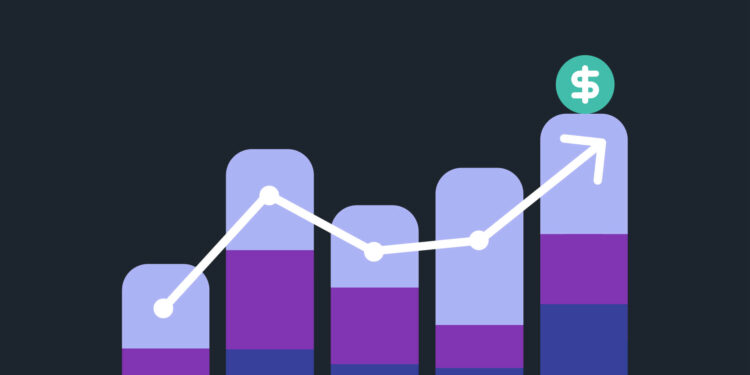Navigating the world of markets can feel intimidating, especially if you’re new to the field. What’s the difference between a bull market and a bear market? Why does everyone seem so focused on diversification? Understanding key market terms can empower you to make better financial decisions and build confidence in tackling the complexities of investing, trading, and financial markets.
This guide breaks down essential market terms in an approachable and easy-to-digest way, specifically designed for everyday Americans and learners. By the time you finish reading, you’ll have a solid grasp of the foundational language used in market conversations, making it easier to follow financial news and even start building your portfolio confidently.
Why Knowing Market Terms Matters
Before we jump into the terms, let’s quickly address why this is so important. Financial markets shape many aspects of our lives, from the growth of retirement savings to the price of goods and employment rates. By learning key terms, you can better understand how markets work, stay informed about their fluctuations, and make smarter, more personalized financial choices.
Now, let’s explore the key terms you need to know.
Key Market Terms for Beginners
Understanding key market terms is essential for beginners looking to navigate the world of trading and investing. Terms like supply and demand, market capitalization, liquidity, and volatility help investors make informed decisions. Knowing these concepts improves financial literacy and confidence when analyzing market trends or making investment choices.
1 Bull Market vs. Bear Market
These are two of the most popular phrases you’ll hear, describing the general mood or trajectory of a market.
- Bull Market refers to a market that is on the rise. It is optimistic, with prices of stocks, bonds, or other assets steadily going up. Investors typically feel confident during this period.
- Bear Market describes a market in decline, often marked by a drop of 20% or more from recent highs. Investors tend to be more cautious or retreat to safer investments during bear markets.
Think of the terms this way—bulls charge upward with their horns (rising markets), while bears swipe downward with their claws (falling markets).
2 Diversification
This is a strategy used to reduce risk in your portfolio by spreading investments across different types of assets, industries, or geographies. For instance, instead of putting all your money into tech stocks, you might diversify with real estate, bonds, and international funds.
Diversification lowers the likelihood that a poor performance in one area will significantly affect your overall portfolio. It’s essentially putting the old “don’t put all your eggs in one basket” wisdom into financial practice.
3 Volatility
Volatility measures how much the price of an asset, such as a stock or cryptocurrency, fluctuates over time. High volatility means prices can change drastically in a short period—think Bitcoin. Low volatility assets, like savings bonds, tend to have more stable and predictable values.
Volatility isn’t inherently good or bad; it depends on your financial goals and risk tolerance.
4 Equity
Also called “stocks” or “shares,” equity essentially represents ownership in a company. When you purchase stock in a company, you become a part-owner and have a claim to a portion of its profits.
It’s important to know that equities can be volatile but historically offer the potential for long-term growth.
5 Index Fund
An index fund is a type of mutual fund or exchange-traded fund (ETF) that aims to replicate the performance of a specific market index, like the S&P 500.
Why do investors love them? They’re a cost-effective way to gain exposure to a broad section of the market without trying to ‘pick’ individual winners.
6 Liquidity
Liquidity describes how easily you can buy or sell an asset without causing a significant change in its price. Cash is considered highly liquid since you can use it immediately. Real estate, on the other hand, is less liquid since it can take weeks or months to sell a property.
When managing your investment portfolio, it’s important to strike a balance between liquid assets (easy access) and less liquid, high-growth potential assets.
7 Market Capitalization (Market Cap)
Market cap is a measure of a company’s size in the stock market. It’s calculated by multiplying the current stock price by the total number of outstanding shares.
Companies are grouped into categories based on their market cap:
- Small-cap (under $2 billion)
- Mid-cap ($2-$10 billion)
- Large-cap (over $10 billion)
Generally, large-cap companies are more established and stable, while small-cap businesses often have more growth potential but higher risk.
8 Yield
Yield is the income return from an investment, often expressed as a percentage. For instance:
- For stocks, yield might refer to dividend payments.
- For bonds, it reflects interest payments.
Higher yields can indicate greater financial returns but often come with increased risk.
9 P/E Ratio (Price-to-Earnings Ratio)
The P/E ratio is a metric used to evaluate whether a stock is priced fairly compared to its earnings. It’s calculated by dividing the stock’s price by its earnings per share.
- A high P/E ratio might indicate that a stock is overvalued or that investors expect high growth.
- A low P/E ratio could suggest that a stock is undervalued or that the company faces challenges.
10 Dividends
Dividends are payments made by publicly traded companies to their shareholders, usually as a share of profits. Not all companies pay dividends, but those that do—like certain blue-chip stocks—can provide a steady income stream.
Dividends are particularly appealing to those looking for income-generating investments, such as retirees.
11 Bond
A bond is a type of investment where you essentially loan money to a government or corporation. Over time, they pay you back with interest. Bonds are generally considered safer than stocks but often offer lower returns.
12 Asset Allocation
This is the strategy of deciding how much of your portfolio to distribute among different asset classes. The main asset categories are:
- Stocks (equities)
- Bonds (fixed-income)
- Cash or cash equivalents
Your allocation depends on your age, financial goals, and risk tolerance.
13 ETF (Exchange-Traded Fund)
An ETF is similar to a mutual fund in that it pools money from multiple investors to buy a diversified portfolio of assets. However, ETFs trade like stocks on an exchange and often have lower fees compared to mutual funds.
14 IPO (Initial Public Offering)
IPO stands for Initial Public Offering. It refers to the first time a company sells its stock to the public. Companies use IPOs to raise funds for growth, while investors see them as an opportunity to get in on a company’s early stages.
15 Time Horizon
Time horizon refers to the length of time you plan to hold an investment before selling it.
- A short-term horizon may involve saving for a vacation.
- A long-term horizon could focus on retirement planning decades away.
Your time horizon influences your asset allocation and risk levels.
Mastering Market Terms, One Step at a Time
Congratulations! You now have a better understanding of key market terms and how they apply to investing and personal finance. While this list covers the basics, there’s always more to learn as you deepen your knowledge.
If you’re ready to take the next step and explore how these terms shape your financial strategy, look out for other helpful resources, tools, and professional advice. Building knowledge is the first step toward building wealth—and now, you’re off to a great start.


















